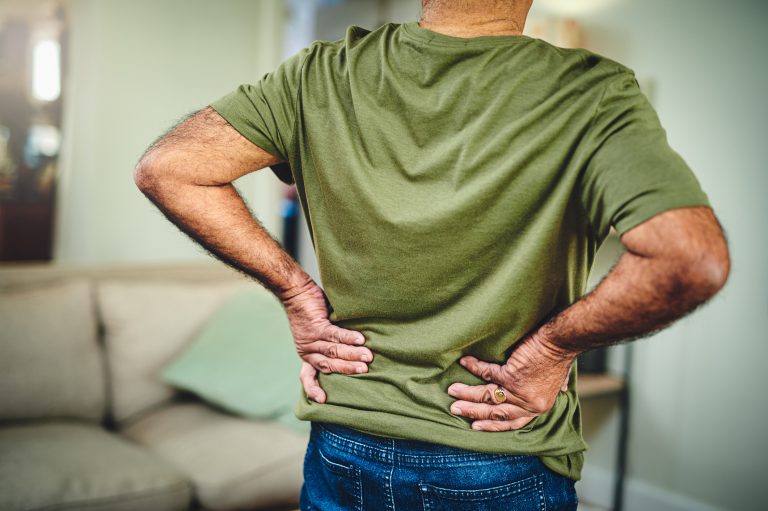Degenerative Spine Causes
Degenerative spine symptoms can take a toll on your daily life. Everyday movements like those involved in cooking, stretching, tying your shoes, or gardening can become difficult and painful. Understanding this condition and the specific symptoms allows you to work closely with your doctor to develop an effective treatment plan.
Joints, ligaments, muscles, discs, and vertebrae make up your spine. Both the joints and discs contain cartilage that makes your neck and back movements smooth and comfortable. As you age, this cartilage begins to break down and become brittle, meaning it can no longer sustain the impact of your body’s movements. Spinal disc breakdown, also known as degenerative disc disease, causes conditions like herniated or bulging discs, among others. The weakening of joint cartilage is called degenerative spine arthritis, or osteoarthritis, which can lead to developing bone spurs. This is the body’s way of protecting itself from the pain caused by arthritic joints rubbing against each other.
You may experience symptoms in the arms or legs if spine degeneration compresses the spinal cord or nerve roots
Common Symptoms
Degenerative spine symptoms vary from person to person, but may include:
- Degenerative disc disease. This condition may cause localized and radiating pain, tingling, numbness, and weakness.
- Degenerative spine arthritis. With spinal arthritis, you may experience warm throbbing and tenderness, limited range of motion, or diminished flexibility.
Degenerative spine symptoms can vary depending on where the nerve compression affects:
- Degenerative cervical spine. This affects the upper neck and back and has potential pain and symptoms in the neck, shoulders, arms, and hands.
- Degenerative thoracic spine. This affects the middle region of the back, often causing symptoms around the rib cage or lower body.
- Degenerative lumbar spine. This condition affects the lower back. You may feel symptoms in the feet, buttocks, legs, and tailbone.
Treatment Options
If you’ve spoken with your doctor about your symptoms and have been diagnosed with a degenerative spine disorder, your doctor may recommend a nonsurgical treatment routine. This may combine mild exercise, hot and cold packs, pain medication, and other treatment methods.
If you have not been able to find relief from nonsurgical treatments, you may be a candidate for surgery. Our board-certified surgeons perform minimally invasive surgical procedures. This allows our patients to experience a faster recovery, smaller incisions, and less pain, all on an outpatient basis. Contact BEST to learn more about our services.
